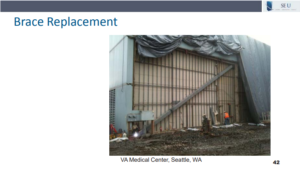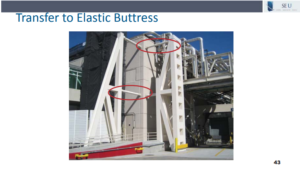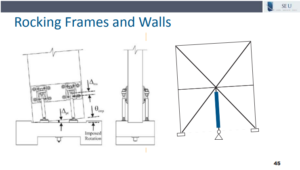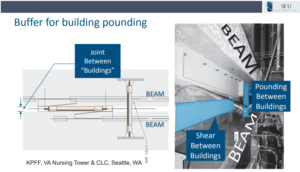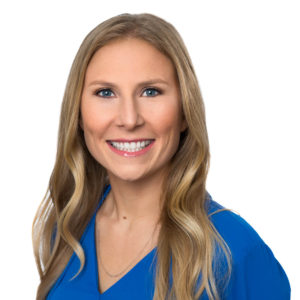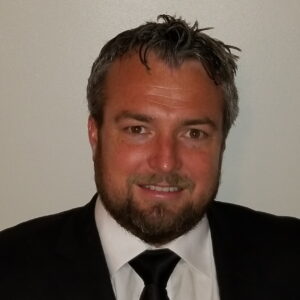 In September 2023, John Kennedy, SE, PE, from Structural Affiliates International, Inc., presented Rules of Thumb for Steel Design. He selected St. Jude Children’s Research Hospital (St. Jude Children’s Research Hospital (stjude.org)) for the SEU Speaker Inspires donation of the month.
In September 2023, John Kennedy, SE, PE, from Structural Affiliates International, Inc., presented Rules of Thumb for Steel Design. He selected St. Jude Children’s Research Hospital (St. Jude Children’s Research Hospital (stjude.org)) for the SEU Speaker Inspires donation of the month.
John shared, “I chose this organization because I support and believe in their mission to advance research, treatment, and prevention of pediatric catastrophic diseases. It’s headquartered in my home state of Tennessee, and I admire the help the organization brings to both children and families who may be in dire need of support.”
Thank you, John, for helping structural engineers with your SE University session, and for your designation of the St. Jude Children’s Research Hospital as our SEU Speaker Inspires Organization of the Month!
SE University began the SEU Speaker Inspires program in 2015 as a way to “pay it forward”, enabling our speakers to designate a charity/organization of their choice for SE University to make a donation to help improve our world.
26 Jan 2024
Improve Your Focus in 2024
Digital notifications, chatty co-workers, and news alerts… Text messages, internet searches, and phone calls… With attention spans declining and distractions on the rise, what can we do to reclaim our focus in 2024?
There are many ways we can improve our focus, but all methods aim to reduce distractions. Set small goals initially, and then work toward implementing some changes to your daily routine. These changes may include forming a detailed schedule and assigning time limits for various tasks and breaks, using alarms to stay on schedule, setting digital notifications to “Do not disturb” while engaged in a task, or creating time for exercise breaks to boost your energy throughout the day. One trick to eliminate falling into the digital rabbit hole of endless news alerts or social media stories might be to include a small reward, such as a coffee refill or quick check in with a coworker, when you successfully end your scheduled time set aside for scrolling on your devices. Creating a list of daily priorities might be necessary, and then any less important or distracting tasks that pop up throughout the day can be added to the bottom of the list, to be addressed at a later time. Focus has also been shown to improve when we make healthy choices such as minimizing sugary foods, getting enough sleep at night, and reading or meditating outside of work.
Interruptions are unavoidable, but establishing a plan to maximize productivity and minimize distractions can improve our ability to focus, especially while at work. Keep it simple and adopt a few changes to your daily routine, and see how your focus returns in 2024!
29 Dec 2023
Quick Reference Rules of Thumb for Steel Design
How many times have you been in a kick-off meeting, and the architect is already pressing you to offer up beam and column sizes for the building in question? Or how do you usually answer when prompted to estimate the total steel tonnage on a project for preliminary cost estimates?
In the September 2023 SEU session, John A, Kennedy, SE, PE, from Structural Affiliates International, Inc.presented Rules of Thumb for Steel Design. John shared some quick reference approximations for mechanical properties of steel sections. He also identified some rules of thumb for the design of beams, columns, and trusses, and shared some design examples using these rules.
John offered an excellent resource which includes many of these quick reference rules in the form of a printable pocket card. Using this card, engineers can make on-the-spot determinations during meetings or preliminary design to get a reference for the size of beam or columns needed. Click here to print your own copy.
The reference card uses units of measurement that engineers typically use, such as weight in pounds, area in square inches, and axial capacities in kips. The card offers all of the economy steel sections as well as the column widths for common sizes. The equations that are shaded can be used for 50 ksi steel.
John noted that rules of thumb are approximations and are not always conservative. Using these approximations should in no way take the place of a rigorous structural analysis; however, these rules of thumb are quick, easy to use, and really simplify some basic calculations to make useful approximations when time is of the essence.
29 Dec 2023
“SEU Speaker Inspires” Organization of the Month: YWCA Utah Women in Jeopardy Crisis Shelter
 In August 2023, Kimberley Robinson, SE, from EVER Seismic, presented It’s Better to Bend than Break: Retrofit with Buckling Restrained Braces. She selected the YWCA Utah Women in Jeopardy Crisis Shelter (YWCA Utah) for the SEU Speaker Inspires donation of the month.
In August 2023, Kimberley Robinson, SE, from EVER Seismic, presented It’s Better to Bend than Break: Retrofit with Buckling Restrained Braces. She selected the YWCA Utah Women in Jeopardy Crisis Shelter (YWCA Utah) for the SEU Speaker Inspires donation of the month.
Kim shared, “The YWCA Women’s Shelter provides safety and sanctuary to those fleeing domestic violence. They offer women and children safety and support to empower them and give them a chance to thrive. I walked those halls for a time as a child and will never forget what they did for my mother and us. They make a profound difference in lives every day.”
Thank you, Kim, for helping structural engineers with your SE University session, and for your designation of the YWCA Women in Jeopardy Crisis Shelter as our SEU Speaker Inspires Organization of the Month!
SE University began the SEU Speaker Inspires program in 2015 as a way to “pay it forward”, enabling our speakers to designate a charity/organization of their choice for SE University to make a donation to help improve our world.
Seismically inadequate buildings are often demolished without due consideration for unique retrofit solutions which may provide the necessary strength and ductility to the existing structure. Buckling restrained braces are one solution which can be used in buildings with weak lateral systems, seismic irregularities, or load path discontinuities, and there are many creative ways to incorporate these braces to add strength and ductility to the existing lateral system.
In the August 2023 SEU session, Kimberley Robinson, SE, PE, from EVER Seismic, presented It’s Better to Bend than Break: Retrofitting with Buckling Restrained Braces and Steel. Kim identified frequent problems with seismically inadequate buildings and explained how Buckling Restrained Braced Frames are used to address inadequacies in buildings.She also covered some of the requirements for retrofits that are included in ASCE 7-22 and ASCE 41-17.
Kim offered some unique solutions to retrofitting buildings with buckling restrained braces, especially for buildings which are very complicated, congested, or cannot be out of use for long periods of time for construction. One example could be working from the exterior of the building by removing the facade to install new BRBs within the existing wall so that there is minimal disruption to the facility.
Another option might be to install BRBs on the exterior of the building which are attached to new elastic buttress frames. This is especially useful for buildings that are congested with existing equipment and piping. These new steel buttress frames are designed to be stronger than the BRBs to limit the seismic drift of the existing building.
For buildings with existing braced frames, elements of the existing frame can be replaced with BRB “fuse” elements which protect the other existing frame elements which remain elastic. Some existing connections may need to be modified to accommodate the additional demand on the frame, but this option results in minimal change within the building layout.
BRBs can also be installed with a rocking frame or wall within the building. The wall or frame remains elastic, while the BRBs take the inelastic demand to strengthen the seismic lateral system.
Kim also provided a solution for two buildings which were anticipated to pound during a seismic event. With BRBs installed across the joint of the two buildings, and an additional BRB running laterally along the joint to combat the shear between the buildings, the anticipated movement between the buildings is reduced.
Many creative solutions exist, but some require a “thinking outside the box” mentality to incorporate in congested or complex structures. These examples are just a few of the possibilities for using buckling restrained braces to retrofit existing structures which do not meet the requirements of current seismic building standards.
In June 2023, Emily Guglielmo, PE, SE, from Martin/Martin, presented ASCE 7 Frequently Asked Questions (Seismic). She nominated LeaderFlow (LeaderFlow – Leadership for AEC professionals) for the SEU Speaker Inspires donation of the month.
Emily shared “I chose LeaderFlow because Structural Engineering has been significantly underrepresented by diverse leadership, and there are still challenges with retaining diverse talent. One large gap in this career pipeline is the opportunity for mid-career professionals, especially those of color to access vital leadership development training and LeaderFlow is working to close that gap.”
Thank you, Emily, for helping structural engineers with your SE University session, and for your designation of LeaderFlow as our SEU Speaker Inspires Organization of the Month!
SE University began the SEU Speaker Inspires program in 2015 as a way to “pay it forward”, enabling our speakers to designate a charity/organization of their choice for SE University to make a donation to help improve our world.
25 Sep 2023
Bearing Wall Versus Building Frame System
If a building consists of bearing walls, shear walls, and braced frames, should the building be classified as a bearing wall system or a building frame system? While an argument can be made in favor of each side, which system is the most appropriate?
In the June 2023 SEU session, Emily Guglielmo, PE, SE, from Martin/Martin, presented ASCE 7 Frequently Asked Questions (Seismic). Emily covered many frequently asked questions regarding seismic design according to ASCE7 and explained the rationale for key updates to ASCE 7-16 and ASCE 7-22 seismic load provisions.
 Emily addressed a common question encountered by engineers when determining what type of seismic force resisting system is most applicable to their structure. While a moment frame system is quite obvious, distinguishing the difference between a bearing wall or building frame system can be more challenging.
Emily addressed a common question encountered by engineers when determining what type of seismic force resisting system is most applicable to their structure. While a moment frame system is quite obvious, distinguishing the difference between a bearing wall or building frame system can be more challenging.
A bearing wall system is defined as a structural system with bearing walls providing support for all or major portions of the vertical loads. Shear walls or braced frames provide seismic force resistance. A building frame system is a structural system with an essentially complete space frame providing support for vertical loads and the seismic forces are resisted by shear walls or braced frames. As Emily pointed out, these definitions leave some ambiguity as to how the vertical loads are supported.
How then should an engineer decide between the two for a structure which is comprised of bearing walls, shear walls, and braced frames? Selecting a system with a higher R value would reduce the seismic base shear, but Emily explained that the intent of the provisions is to prevent a situation where a brittle and catastrophic failure of a lateral force-resisting element also results in the collapse of the vertical load carrying capacity of the building. Thus, when deciding whether a “major” portion of the vertical load is supported by columns or bearing walls, the engineer may want to consider the intent of the provision rather than adhere to a stringent 51/49 percent determination on how the vertical loads are supported. Emily advised using a lower R value in cases where shear walls provide a good portion of the gravity loads since this type of system can result in more catastrophic damage in a seismic event if the lateral system is damaged or fails.
While ASCE 7 does leave some room for interpretation, the intent of the code should always be considered when selecting the seismic force-resisting system. While selecting a higher R value is always tempting, structural engineers should consider the implications of their choices and be able to justify their reasoning.
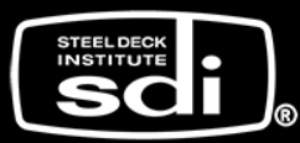 In July 2023, Mike Antici, PE, from Vulcraft, and Thomas Sputo, PE, SE, from Sputo and Lammert, on behalf of the Steel Deck Institute, presented Diaphragms are More Than Just Deck and Fasteners. They selected the Miracle League of Florence County (Miracle League of Florence County – Serving Special Athletes in Florence and Surrounding Counties) for the SEU Speaker Inspires donation of the month.
In July 2023, Mike Antici, PE, from Vulcraft, and Thomas Sputo, PE, SE, from Sputo and Lammert, on behalf of the Steel Deck Institute, presented Diaphragms are More Than Just Deck and Fasteners. They selected the Miracle League of Florence County (Miracle League of Florence County – Serving Special Athletes in Florence and Surrounding Counties) for the SEU Speaker Inspires donation of the month.
The Miracle League of Florence County aims to offer individuals with special needs the opportunity to participate in the sport of baseball in a community supported, safe, adapted and encouraging environment.
Thank you, Mike and Tom, for helping structural engineers with your SE University session, and for your designation of the Miracle League of Florence County as our SEU Speaker Inspires Organization of the Month!
SE University began the SEU Speaker Inspires program in 2015 as a way to “pay it forward”, enabling our speakers to designate a charity/organization of their choice for SE University to make a donation to help improve our world.
28 Aug 2023
Seismic Questions Answered: Podium Structures
Podium structures have increased in popularity in recent years. Are you familiar with the 2-stage seismic analysis procedure in ASCE 7 and necessary structural considerations with this type of structure? ASCE offers guidance for this procedure, but some provisions are more straightforward than others.
In the June 2023 SEU session, Emily Guglielmo, PE, SE, from Martin/Martin, presented ASCE 7 Frequently Asked Questions (Seismic). Emily covered many frequently asked questions regarding seismic design according to ASCE7 and explained the rationale for key updates to ASCE 7-16 and ASCE 7-22 seismic load provisions.
Emily clarified several questions on the 2-stage seismic design of podium-type structures. To hear Emily explain the most commonly confused provisions, watch this short 3 minute video:
ASCE 7 has included some changes in the 2022 cycle to clarify past confusion with the 2-stage procedure, and as Emily noted, more work is forthcoming on the 2-stage seismic analysis provisions to clarify this procedure for practicing engineers and code officials in future editions.
In May 2023, Cathleen Jacinto, PE, SE, from FORSE Consulting and the Steel Tube Institute, presented Know Your HSS Welds. She selected the Pancreatic Cancer Action Network (Pancreatic Cancer Action Network – Research, Patient Support, Resources (pancan.org)) for the SEU Speaker Inspires donation of the month.
The Pancreatic Cancer Action Network, or PanCAN, seeks to create a world in which all patients with pancreatic cancer will thrive. Their mission includes improving the lives of everyone impacted by pancreatic cancer by advancing scientific research, building community, sharing knowledge, and advocating for patients.
Thank you, Cathleen, for helping structural engineers with your SE University session, and for your designation of the Pancreatic Cancer Action Network as our SEU Speaker Inspires Organization of the Month!
SE University began the SEU Speaker Inspires program in 2015 as a way to “pay it forward”, enabling our speakers to designate a charity/organization of their choice for SE University to make a donation to help improve our world.

